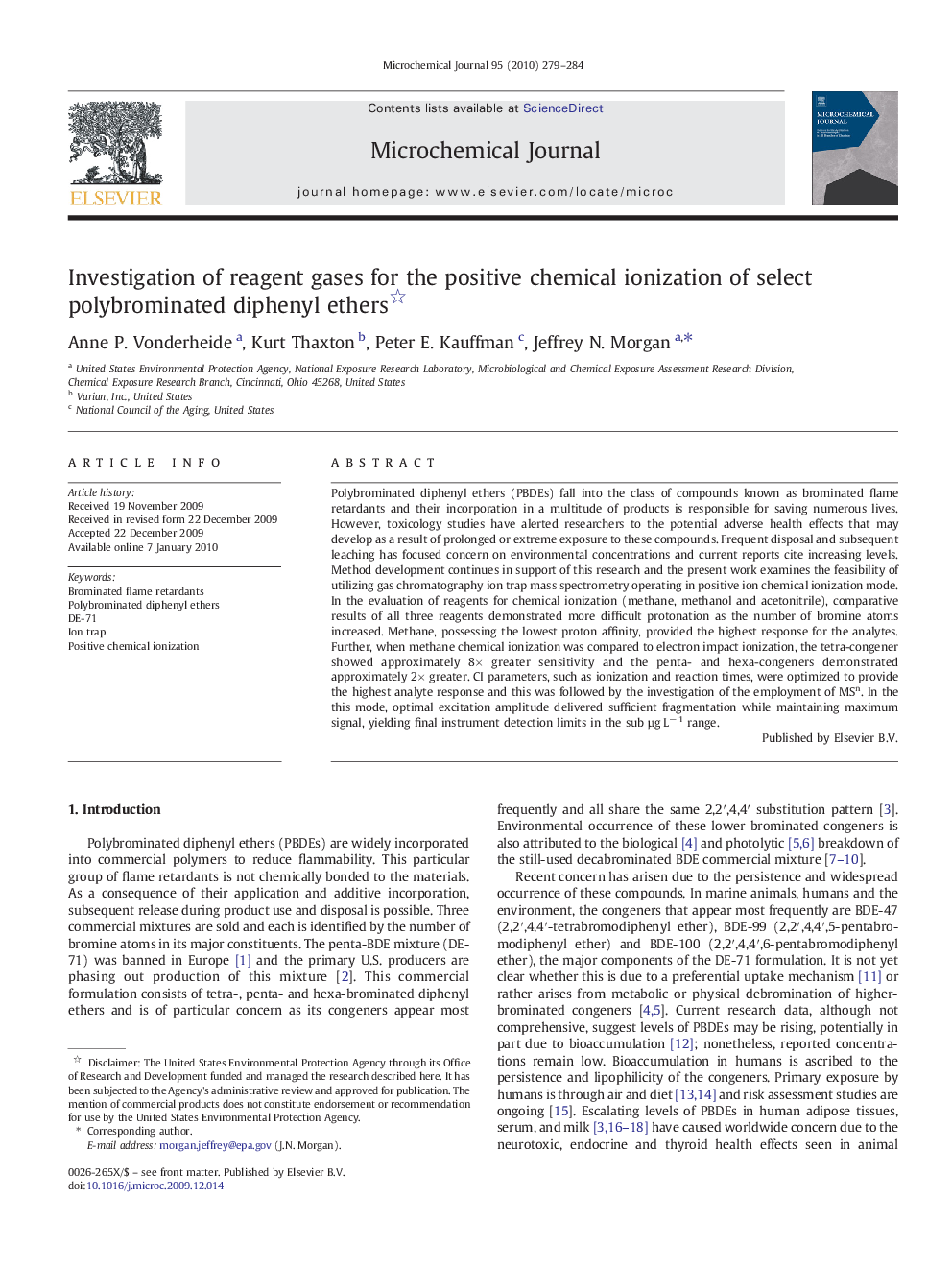| Article ID | Journal | Published Year | Pages | File Type |
|---|---|---|---|---|
| 1227981 | Microchemical Journal | 2010 | 6 Pages |
Abstract
Polybrominated diphenyl ethers (PBDEs) fall into the class of compounds known as brominated flame retardants and their incorporation in a multitude of products is responsible for saving numerous lives. However, toxicology studies have alerted researchers to the potential adverse health effects that may develop as a result of prolonged or extreme exposure to these compounds. Frequent disposal and subsequent leaching has focused concern on environmental concentrations and current reports cite increasing levels. Method development continues in support of this research and the present work examines the feasibility of utilizing gas chromatography ion trap mass spectrometry operating in positive ion chemical ionization mode. In the evaluation of reagents for chemical ionization (methane, methanol and acetonitrile), comparative results of all three reagents demonstrated more difficult protonation as the number of bromine atoms increased. Methane, possessing the lowest proton affinity, provided the highest response for the analytes. Further, when methane chemical ionization was compared to electron impact ionization, the tetra-congener showed approximately 8à greater sensitivity and the penta- and hexa-congeners demonstrated approximately 2à greater. CI parameters, such as ionization and reaction times, were optimized to provide the highest analyte response and this was followed by the investigation of the employment of MSn. In the this mode, optimal excitation amplitude delivered sufficient fragmentation while maintaining maximum signal, yielding final instrument detection limits in the sub µg Lâ 1 range.
Keywords
Related Topics
Physical Sciences and Engineering
Chemistry
Analytical Chemistry
Authors
Anne P. Vonderheide, Kurt Thaxton, Peter E. Kauffman, Jeffrey N. Morgan,
